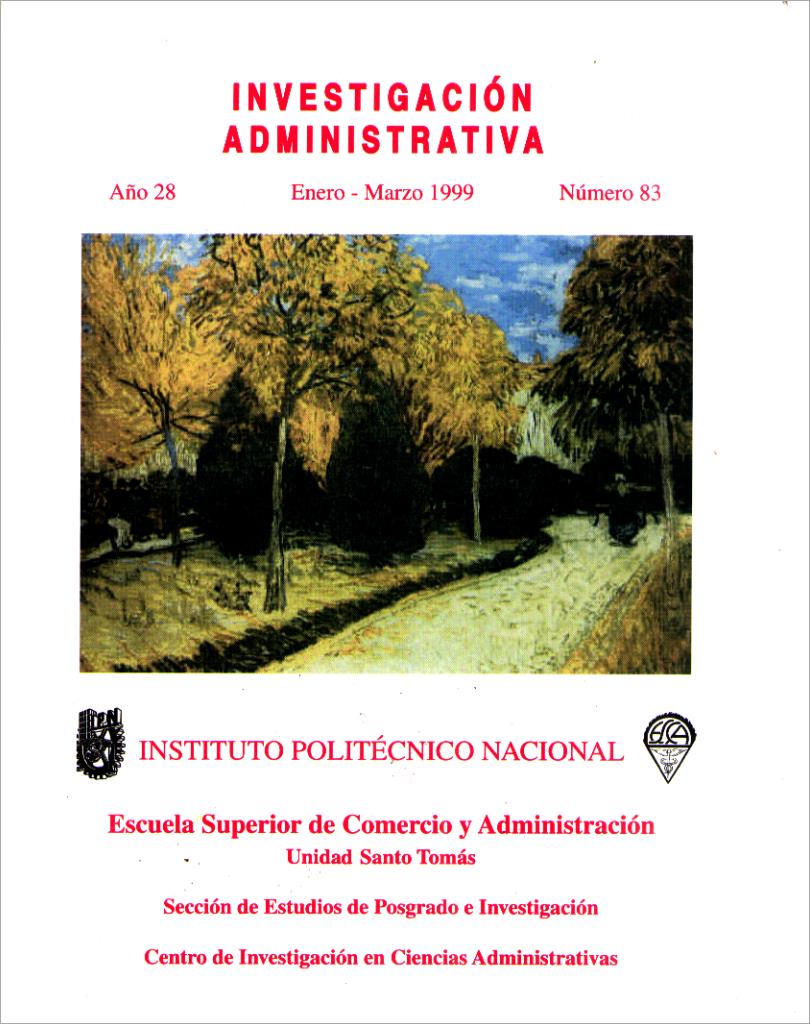Information technologies in business organizations
Main Article Content
Abstract
First, a conceptual analysis of information and information systems is carried out, examining the latter's structure, functions, and process components. Finally, a model of ICS interaction with the organization is established, known as the modified Scott-Morton model (Oren et al., 1996).
The next dimension of analysis relates to the company's strategy. Earl's (1996) OFF (Organizational Fit Framework) model is used, which provides a more practical perspective than Henderson and Venkatraman's interaction model, known as SAM (Strategic Alignment Model, 1989, 1993).
Finally, we consider the integration of the previous models, which have a fundamentally static projection, with the Silver et al. (1994) model, which incorporates the information technology integration process along with an organizational model that basically coincides with the modified Scott-Morton model in substance, though not in form.
The final analysis raises the need to consider the enterprise information and communications system (EICS) in an integrated and comprehensive manner, as well as to develop the discipline, moving beyond the instrumental consideration of information in the economics of the company.
Article Details

This work is licensed under a Creative Commons Attribution-NonCommercial 4.0 International License.
References
Drucker, P.( 1993). “La sociedad Postcapitaiista". Ed. Apostrofe.
Existe una iniciativa de la UE, bajo el epígrafe ISPO (Information Society Project Office), a la cual también se han sumado los ministros de Industria y Telecomunicaciones del G7, creando los llamados IS Pilots Projects, con objeto de potenciar el desarrollo de la Sociedad de la Información. Ver el web de ISPO en http:/Avww.ispo.cec.be y también http://www. ispo.cec.be/G7/proi idx. htm I.
Los trabajos que se pueden considerar en el origen de dicha teoría son: “Cybernetics: or control and communication in the animal and the machine" de N. Wiener (1948), y “The mathematical theory of communication" de C.E. Shannon y W. Weaver (1949).
Concepto introducido por primera vez por Bar-Hillel en 1955. Una referencia interesante sobre este aspecto es: "Language and information: selected essays on their theory and application" de Yehoshua Bar-Hillel (1964).
Checkland, P. (1981): “Systems Thinking. Systems Practice’. John Wiley & Sons. New York.
Andreu, R.; Ricart, J.E.; Valor, J. (1994): “Estrategia y Sistemas de información". McGraw-Hill.
Son muchos los autores que parten de un modelo similar como referencia para el estudio del Sistema de Información: Laudon, Lucas, Scott-Morton, Tardieu, etc.
Esta modificación fue presentada por primera vez en 1996, en el III Congreso Mundial de IFSAM celebrado en París, por Orero, A.; Chaparro, J y Merino, J. en el trabajo “The manage of Organizational Change by Information Systems". El modelo original puede verse en Scott-Morton (1991), “The Corporation of the 1990's" .Ed. Oxford University Press. Pag. 20., que también es citado como el modelo de Equilibrio de Gestión de Scott-morton por Benjamin, R. y Levinson E. (1993 )."A Framework for Managing IT-Enabied hange" .Sloan Management Review, Summer, pag 27.
Orero, A. (1995). “Las Tecnologías de la información en la empresa". En “Dirección de Empresas de los noventa: Homenaje al profesor Marcial Jesús López Moreno’. Dirigido por Cuervo, A. Ed. Civitas. Pág 378.
Sampler, J. (1996). “Exploring the Relationship between IT and Organizational Structure" . en “Information Management: The organizational dimension",dirigido por Earl, M. Ed. Oxford University Press. Pag 5-22
Earl, M. (1996). “Integrating IS and the Organitation: A Framework of Organizational FiT. en “Information Management: The organizational dimension",dirigido por Earl, M. Ed. Oxford University Press. Pag 485-502.
Herderson, J., Venkatraman, N. (1994). “Strategic Alignment: A model for organizational transforamtion via information Technology. En “Information Technology and the Corporation of the 1990s’ dirigido por Allen, T. y Scott-Morton, S. Ed. Oxford University Press.
Suárez, C. (1997). “Desarrollo metodológico para el diseño de estrategias de cambio organizativo basadas en la mejora de los sistemas de información de las organizaciones". Tesis doctoral dirigida por Orero, A. Ed. Publicaciones ETSIT- Universidad Politécnica de Madrid. Pág 189-193.
Silver, M. Lynne, M y Mathis, C. (1994). ‘The Information Technology Interacción Moder. Work Paper Series STERN IS- 94-5. Stem School of Bussines. Center for Research on information systems. New York University. Obtenido a través de Internet en : http://www.nyu.edu o bien en http://is- 2,stem.nyu.edu

